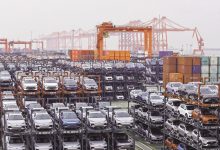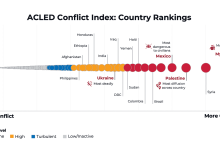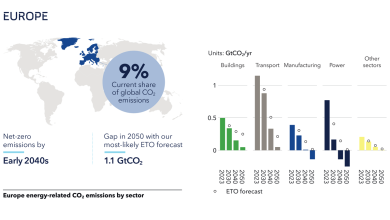‘Green’ Vehicles – Trend or Necessity?
‘Green’ vehicles are gaining ever more ground against the conventional ones, with gasoline or diesel engines. Whether we talk about increasing environmental responsibility, constraints that already apply or have been announced by the municipalities of the major cities at global level, a marketing trend or simply for ideological reasons, electric or hybrid cars area increasingly often a topic of conversation (and not only) all over the world.
But if we consider that the autonomy of batteries is relatively limited, the travel speed cannot be compared yet with that of the existing muscle cars, and the resources allocated to produce one battery are significant, as well as the price to replace it, we might think that gasoline and diesel engines still have a lot to live.
Increase in the number of ‘green’ vehicles in Europe
Purchases of ‘green’ vehicles (electric & hybrid) in Europe witnessed a significant increase in the first quarter of 2020, although the general evolution of the automotive market was negative. In Romania they reached a market share of 5.7%, compared to only 4.1% in the similar period of 2019, according to data from the Automotive Manufacturers and Importers Association (APIA).
“Recent publicly available analyses show that in the context of the COVID-19 pandemic purchases of ‘green’ vehicles (electric & hybrid) in Europe (but also in Romania) witnessed a significant increase in the first quarter of 2020, although the general evolution of the automotive market was negative (-26.3% overall for the EU+EFTA+UK, with -22.2% in Romania).
Therefore, according to the JATO study or that of PwC, recently published, electric vehicles recorded in Europe constant growth in both March and for the entire first quarter, Europe being in Q1/2020 global leader in the ‘green’ automotive market (PwC). In this context, electric vehicles in March 2020 recorded an increase in registrations by 15%, which corresponds to a market share of 17.4%, respectively +10.1% compared to March last year (JATO),” according to a statement by APIA.
Positive trend in Romania
In Romania as well, APIA says, evolution in the first quarter of 2020 of ‘green’ vehicles is positive, reaching a market share of 5.7%, compared to only 4.1% in the previous year, both as a result of decline in the volumes of heat engine (gasoline, diesel) vehicles and due to a higher volume than that recorded last year (1,575 in 2020, compared to 1,469 in 2019).
“As it can be noticed, in the first two months ‘green’ vehicles recorded a positive evolution, contrary to that recorded by those with conventional heat engines, and in March, when the impact of the COVID-19 pandemic started to be felt, in conjunction with waiting for the start of the Rabla Plus Program, the declines, although important (-26.3% for EV and -15.6% for HEV) were lower than those recorded by those with conventional engines (-35% gasoline and -29.8% diesel).
However, in the following months, after the actual start of the Rabla Plus Program (at the end of March), purchases of ‘green’ vehicles are expected to return to important growth. This estimate is the result of the fact that, in the same period since the beginning of the program (number of days), this year 372 reservations were already made for the acquisition of BEV and PHEV vehicles, by 72.2% more than in 2019, when, in the same period, there were only 215 reservations,” the statement shows.
Moreover, it should be noted that this important increase in interest for electric vehicles takes place in the context of the COVID-19 pandemic and difficulties caused by the restriction of activity in many institutions involved in the process of carrying out this program.
“In this context, openness shown by both the Ministry of Interior and the Ministry of Environment is welcomed in this context, as, understanding the need for mobility of citizens and employees in this period, they have assured, under the legislative acts issued, a continuation of the Rabla and Rabla Plus programs and keeping the participant economic operators operational,” APIA also mentions.
Top brands sold in 2020 in Romania
In Romania, in an automotive market that has compressed significantly after the first seven months of this year (-34.2%), ‘green’ vehicles (BEH, PHEV) continue their growth (+53.6% y/y). Although in July this year (according to DRPCIV data) fewer vehicles were registered compared to the similar month of last year (-42.4%), if we relate to this year’s evolution, we can say the automotive market shows signs of recovery (+22.9% compared to the volume recorded in June, after in June we also witnessed an increase by 38.9% compared to May this year).
In terms of purchases of new vehicles in the EU, the situation of Western Europe countries is relevant, with a 2.2% increase in July compared to the similar month of last year, thus offsetting to some extent the declines so far. However, after the first seven months of 2020, for the whole of this group (according to LMC Automotive www.lmc-auto.com), there was a negative general evolution (-35%) compared to the same period of 2019.
The general ranking by brands (passenger cars + commercial vehicles) after the seven months of 2020 is led by Dacia, with 20,252 units, followed by Volkswagen, with 5,779 units, Renault 5,667 units, Skoda 5,000, Ford 4,905 units and Hyundai with 4,064 units.
In terms of passenger cars, at the end of the first seven months of 2020, Top10 is led by Dacia, with 18,950 units (-33.8% compared to 2019, market share 30.7%), followed by Skoda 5,000 units (-34.6%, market share 8.1%), Volkswagen with 4,880 units (-24.5%, market share 7.9%), Renault 4,678 units (-44.3%, market share 7.6%) and Hyundai 4,064 units (-8.9%, market share 6.6%).
Dacia has presented its new electric model
Two and a half years after Renault had presented the K-ZE concept of a mini-class electric car designed specifically for emerging markets, Dacia presented the first images with the future model that will be available in Europe starting with 2021.
The Dacia Spring concept, considered the most affordable electric car in Europe, was designed based on the Renault K-ZE with which it shares several design elements. Moreover, the presentation takes place ten years after Dacia launched at the Geneva Motor Show the Duster SUV, the model with the greatest impact on the Mioveni plant in the last decade.
Dacia Spring forecasts a mini segment model with 5 doors and 4 seats, benefiting from a 100% electric engine. The series version aims for a range of about 200 km, which guarantees a versatile use, both in the urban environment and on interurban routes. For the first time, Dacia Spring announces that the future model will have headlights with LED technology, which consumes less electricity than halogen ones.
Diesel versus gasoline
Depending on the type of fuel of passenger car acquisitions, we notice that, in July 2020, the share of diesel cars is higher than in the previous month of 2019 (22.7% in June). For the whole period, diesel cars recorded an increase in the market share in 2020, respectively 28.3% compared to 26.6% recorded in 2019.
For the first seven months of 2020 as a whole, diesel cars continue to hold the largest share, i.e. 65.6% of the total (down compared to the share recorded last year, 69.5%).
‘Green’ cars, increase by 3.6%
As far as ‘green’ vehicles are concerned, respectively the electric ones (100% and hybrid plug-in), as well as the hybrid ones (which have electric propulsion without charging from an external source), although after the first seven months of 2020, the automotive market is in a sharp decrease, this category of cars registers, as a whole, an increasing volume (+ 3.6%), compared to the similar period of last year.
On sub-categories, an important growth is recorded, of 38.6%, for 100% electric vehicles and a much more consistent one, of 115.1%, for hybrid plug-in vehicles. On the other hand, hybrid vehicles with electric propulsion (the multi-hybrid ones are not included here) register after the first seven months of 2020 a negative evolution (-11.5%), according to DRPCIV data, processed by APIA.
In terms of top brands in the first seven months for electric vehicles (100% + hybrid plug-in), which are stimulated by the Rabla Plus Program, the largest volumes are recorded by Renault (285 units), Skoda (213 units) and BMW (132 units).
In this context, in 2020 purchases of ‘green’ vehicles are expected to register significantly higher volumes than in the previous year, these being, to a great extent, stimulated by the Rabla Plus Program (on this date, the program registers over 1,400 electric and hybrid plug-in vehicles reserved compared to only 800 years (+75% purchase intention).
E.ON Energie and MOL Romania to install 40 charging stations in 2020
E.ON Energie and MOL Romania will install this year 40 fast charging stations for electric vehicles, within the NEXT-E project. So far, E.ON Energie Romania has installed 17 stations: Iasi, Tg. Frumos (Iasi County), Cristesti (Iasi County), Roman (Neamt County), Piatra Neamt, Tasca (Neamt County), Gheorgheni (Harghita County), Sovata (Mures County), Targu Mures, Bacau, Suceava, Adjud (Vrancea County), Bucharest (three stations), Ramnicu Valcea and Constanta. The charging stations most recently opened, in Constanta, has a maximum power of 77 kW.
Therefore, the average time for charging an electric vehicle will be approximately 40 minutes for 80% of the battery. In the location a fast charge station is installed, of 1×50 kW (direct current connectors CCS or CHAdeMO) + 1×22 kW (alternating current connector Type 2), which benefits from two parking spaces. The initiative is part of the NEXT-E project, co-financed from European funds through the Connecting Europe Facility (CEF) program through which E.ON Energie Romania aims to install 19 fast charging units for vehicles, another 21 following to be installed by MOL, one of the partners in this project.
So far, through the NEXT-E stations installed by E.ON Energie Romania, the owners of electric or hybrid vehicles have used approximately 30,000 kWh of electricity and have traveled over 200,000 km. Most charges were made at the stations in Roman, Suceava and Iasi. The pan-European NEXT-E network will include six different countries, and 40 electric charging stations out of a total of 252 in the NEXT-E project will be installed in Romania and located on the routes: Suceava-Bacau-Calarasi, Constanta-Bucuresti-Timisoara and Iasi-Targu Mures-Alba Iulia. NEXT-E project was selected by the European Commission, in July 2017, for co-financing through the Connecting Europe Facility (CEF) program.
The NEXT-E consortium will receive EUR 18.84 million for the implementation of the project, this being the largest CEF funding granted to a project for electric vehicles. Within it, a number of 222 multi-standard fast charging stations (50 kW) and 30 ultra-fast charging stations (150-350 kW) will be installed by 2020 along the main European corridors and the Trans-European Transport Network (TEN-T). The consortium consists of companies within the E.ON Group, MOL Group (the subsidiaries in the six participating countries), Hrvatska elektroprivreda from Croatia, PETROL (in Slovenia and Croatia), as well as Nissan and BMW. The network developed by this consortium aims to create an infrastructure in the Czech Republic, Slovakia, Slovenia, Hungary, Croatia and Romania.
Enel X Romania launches EV charging points network in Bucharest and surrounding areas
Enel X Romania has installed and put in operation a network of 34 charging points in Bucharest and surrounding areas, as part of its plan to build a wide charging infrastructure for electric vehicles across Romania.
“The sales of electric and hybrid vehicles is constantly increasing, even during the difficult period that we are facing, and in a context that sees the auto market massively decreasing overall. However, we are confident that the electric segment will maintain its ascending course, in Romania in particular also due to the relaunch of Rabla Plus governmental program, which has proved to be of real value for the customers. We are very happy to allow users of EVs in Romania more flexibility for their mobility needs, and help improve access to charging infrastructure for more adopters of electric mobility, following our pledge to enable transportation anywhere in the country in a cleaner and more sustainable way”, said Marius Chiriac, Head of Enel X Romania.
The charging infrastructure installed is based on the new, intelligent charging solutions of the Enel X global business line. The majority of the first series of charging points are 2×22 kW units, named JuicePole, which allow for the recharge of two electric vehicles simultaneously and for the charge of up to 40% of the battery levels in 30 minutes, depending on the car model and specifications. The Enel X installed charging solutions account also for the fast charging JuicePump, which is 50 kW DC, 22 or 43 kW AC, and allows the recharge of two electric vehicles at the same time.
Users will be able to recharge their vehicles at the Enel X charging points using the JuicePass mobile app – the single interface for Enel X customers to access a network of over 50,000 public charging points across 18 European countries, leveraging on the interoperability partnership with charging network operators IONITY and SMATRICS. The app can be downloaded from Google Play or App Store, and an installing guide can be accessed on enelx.ro website.
Drivers can check the locations and status of Enel X charging points on an interactive map either on JuicePass app, or on the website, here. They can see in real time if a charging station is available, occupied or in maintenance, as well as its type (fast, ultra-fast), the charging cable type, power, accessibility and distance to reach it.
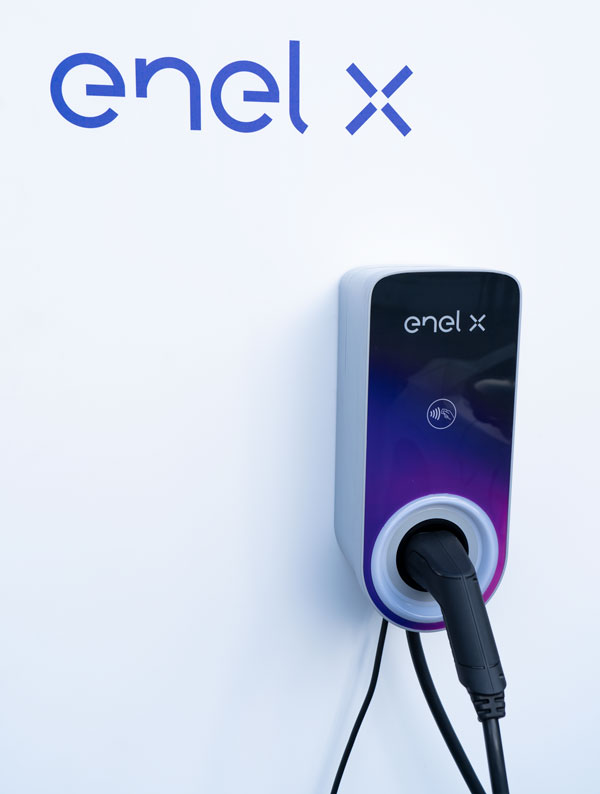
Enel X Romania has the largest public e-Mobility infrastructure plan in the country, which includes the installation of approx. 2,500 charging points across all of the country’s regions up to 2023, involving an overall investment of approximately 15 up to 20 million euros.
The installation of Enel X charging points will continue with other units in Bucharest, Timisoara, Sibiu and Constanta. The plan covers all of Romania’s regions, and is aimed at adapting the distribution and installation of charging stations to the development of EV use in the country, at household and institutional level, as well as among businesses, through the demand from fleet owners.
Enel X Romania installs charging infrastructure on the premises of ‘Recharge Partners’ – shopping malls, supermarkets, restaurants and hotels that want to attract electric car users. The installation and maintenance of the charging infrastructure comes at no cost to the company’s Recharge Partners in exchange for the availability of parking areas.
The company is also offering a similar service to municipalities that are interested in improving air quality by encouraging electric mobility. Enel X Romania helps local authorities identify the most appropriate solutions and provides the installation and maintenance of the charging infrastructure at no cost, on public parking spaces.
Electric vehicles around-the-world
Renault will invest EUR 128mln in a joint venture in the electric vehicles sector with China’s Jiangling Motors. The French group will hold a 50% stake in JMEV, a JMCG division launched in 2015. The joint venture will build a new series of vehicles, the companies following to tap into a market that has increased four-fold in the last six years.
China’s YinLong Group also plans to launch production of two bus models in Serbia, after completing the acquisition of insolvent Ikarbus, announced the CEO of the company, Aleksandar Vicentic. Only the batteries of the two models will be made in China.
From Asia also comes the news according to which the South-Korean company Kyungshin Cables plans to invest EUR 20mln in the construction of electric vehicle charger cable sets in Serbia’s Smederevska Palanka. Works at the new factory will be completed next year, 700 employees following to work here.
The deal under which Fiat Chrysler Automobiles pools its fleet with Tesla to be able to comply with stricter emissions regulations in Europe is in fact equivalent to a financing of the future electric car factory in Germany of the U.S. manufacturer. The Italian-U.S. manufacturer has concluded a deal with Tesla that could cost Fiat EUR 1.8bn by 2023.

Europe beats China in terms of number of electric vehicles
Europe has surpassed China for the first time in terms of number of electric vehicles registered, according to data collected by analysts from the largest markets in Europe. Germany, France, Spain, Italy and the UK have managed to sell, in the first quarter of this year, more electric vehicles than China, according to a study by PwC.
According to this data, only in the five European markets, also known as the ‘Big 5’, 79,300 electric vehicles have been registered, to which those from the remaining European countries are added. In China, the volume sold, due to blockage caused by the coronavirus crisis, but also by factors that slowed down the market in the last year, amounted to 77,256 units.
It is for the first time when Europe surpasses China, a country where electric vehicles witnessed a real explosion, with the help of emission restrictions imposed by the Government, and also as a result of the low price that locally manufactured electric vehicles have. Unfortunately for the Chinese automotive industry, car sales, including EV, collapsed more than half this year.
Instead, Europe this year witnessed a substantial increase in sales of electric vehicles, despite the coronavirus epidemic and the fact that dealer networks were closed in most countries. Financial incentives and the more drastic emission targets, as well as the expansion of the number of charging stations and the apparition of batteries with a higher range determined Europeans to prefer such a vehicle. If in the category of low-emission vehicles hybrid cars are also included, then Europe categorically overtakes China, where this type of vehicles is not equally popular.
Poland will present, by the end of this year, the first electric vehicle that it will produce and which will be designed by Italy’s Torino Design, in two versions, hatchback and SUV. The experience of the Italian company has been proven so far by designing cars for Ferrari, Fiat, McLaren and BMW.
The whole project envisages the production of five models: three are in the C segment, which will be adapted to the expectations of Polish drivers, and then it will move to smaller vehicles in the B segment and more models for families. In Poland, the automotive industry was hardest hit by the coronavirus crisis, with car production falling by 99% in current terms.
The automotive industry is equivalent to a significant part of the economy, representing 11% of industrial production and 4% of the country’s GDP. The sector has 130,000 employees and produces 8-9 hundred thousand light vehicles annually, while the production of larger commercial vehicles amounts to 70-90 thousand units per year. Most of the production is destined for export, mainly to the EU. The largest part of the sector is controlled by Western companies and financed by foreign investments, such as Fiat, Opel, Toyota, Volkswagen, MAN, Volvo and Scania.
Moreover, the Warsaw government wants one million electric vehicles to run on national roads by 2025. With production units for electric buses and a major battery factory for electric vehicles, Poland wants to become the engine of transport electrification in Europe. Under the new legislation adopted in the field of electro-mobility, local authorities are empowered to play an important role in the development of this field. To this end, subsidies are provided for the construction of charging infrastructure for public transport and charging stations for electric vehicles used by local authorities.
A significant increase in the number of electric vehicles in circulation on the roads of the Czech Republic is forecast for the coming years. The country’s largest carmaker, Skoda, plans to sell 2,500 cars next year.
A survey conducted by the German economic institute Ifo, which highlighted an index of sentiment in the automotive industry, found that the automotive industry in this country remains pessimistic, and companies in the sector rate their current business situation as weaker than during the crisis of 2009. “The industry is down in a dark cellar, and although it’s managed to climb back up a few steps, there’s still no sign of light,” said Klaus Wohlrabe, head of surveys at Ifo.
Demand is lower than at any time since 1991, but good news is that the production expectations index has risen rapidly, which means that several companies have announced that they wanted to expand their production, which is currently at a very low level. The export expectations indicator also increased, a sign that companies believe that from now on their exports will decrease more slowly. However, as far as employees are concerned, problems have only begun.
State aid of EUR 3.2bn from the European Commission
At the end of last year, the European Commission approved a state aid of EUR 3.2bn from seven member states for research and innovation in the field of battery technology. Therefore, the Government of Germany will grant a support of EUR 100mln for the BASF project, which has chosen to invest in Brandenburg city to build its second electric vehicles battery materials factory in Europe, part of an investment plan of EUR 400mln to capitalize on the growing market of electric vehicles.
Bulgaria also has plans to produce vehicles and produce batteries for electric vehicles, holding discussions with Tesla for a potential investment in the neighbouring country south of the Danube. Greece is also negotiating the production of electric vehicles with the German carmaker Volkswagen.
Moreover, Germany’s BMW has purchased a land of 400 hectares in Debrecen, Hungary, at 95 kilometres from the capital Budapest, to build a new factory, following an investment of EUR 1bn. However, the pandemic has postponed by one year the plan of the German group to start the investment scheduled for this spring, which will create here 1,000 jobs and produce 150,000 cars per year.
The BMW Group announces that it intends to sell over 7 million electric and hybrid plug-in vehicles in the next 10 years, of which more than half will be fully electric. BMW announces a 10-year sustainability plan, stating that it wants to bring forward the Paris Agreement on climate change, the main target being the expansion of electric mobility. The company says that, at the moment, BMW and MINI electric and PHEV sales account for 13.3% of the European car market, according to IHS Markit data. BMW says that the percentage represents 1.5 times more electrified cars than the average share of European brands, respectively 8%.
However, BMW aims to increase this value to one third in 2021 and to 50% in 2030. Currently, the electrified vehicles of BMW and MINI are sold in 74 markets around the world, with a volume of over 500,000 units, at the end of 2019. By the end of 2021, the BMW Group claims it will exceed 1 million vehicles. By 2030, the amount of these vehicles will exceed 7 million, according to company’s representatives, of which more than 60% will be fully electric.
Emissions produced by BMW Group vehicles per kilometer will be reduced by about 40%, according to the BMW plan. BMW confirms on this occasion some of the future electric models: Series 7, Series 5 and X1, which will have the same multi-energy strategy, launched this year on the X3 SUV with the iX3 variant. It was presented for the first-time last month and will be launched in world markets starting this year. The BMW Group is also developing its charging infrastructure.
The company will provide different types of charging stations, for home installation, offers and access cards for public stations, to over 155,000 charging points in Europe, while expanding the network of corporate charging stations to approximately 4,100 points in Germany alone. Last but not least, starting this year, the BMW Group claims it will supply all production sites around the world with 100% ‘green’ electricity.
Battery recycling centre in Finland
German giant BASF, Russia’s Norilsk Nickel and Finland’s Fortum have signed an agreement to build a battery recycling centre in Finland that will serve the electric car market. The companies plan to use the metals in recycled batteries to produce battery material using renewable energy sources.
Electric batteries manufactured in Bucharest
In 2019, Rombat, an established company on the domestic car battery market, acquired 35% of the shares of Prime Motors Industry Bucharest, a manufacturer of Li-Ion batteries and electric vehicles, controlled by businessman Adrian Polec. Battery tests are currently being carried out here, so that, from 2022, they can be delivered to European electric car manufacturers.
Rombat has invested EUR 12mln in the factory founded by Adrian Polec and will produce the cells for the new batteries. The two companies are not at the first collaboration, as they developed in 2018 the electric version of Dacia Logan, this being one of the first steps that Rombat took in the field of batteries for electric vehicles and energy storage.
“We currently export worldwide for industrial, energy storage and automotive applications. We have already talked to several car manufacturers in Europe, but most start series production in 2022-2023. But to get to mass production you have to produce for 3-4 years to be approved. We now have an installed capacity of 200 MWh and we can produce one million cells,” says Adrian Polec.
Taking into account on average a 58kWh battery, as much as a Volkswagen ID.3 with a range of 420 km, then the factory can deliver batteries for about 3,500 cars per year.
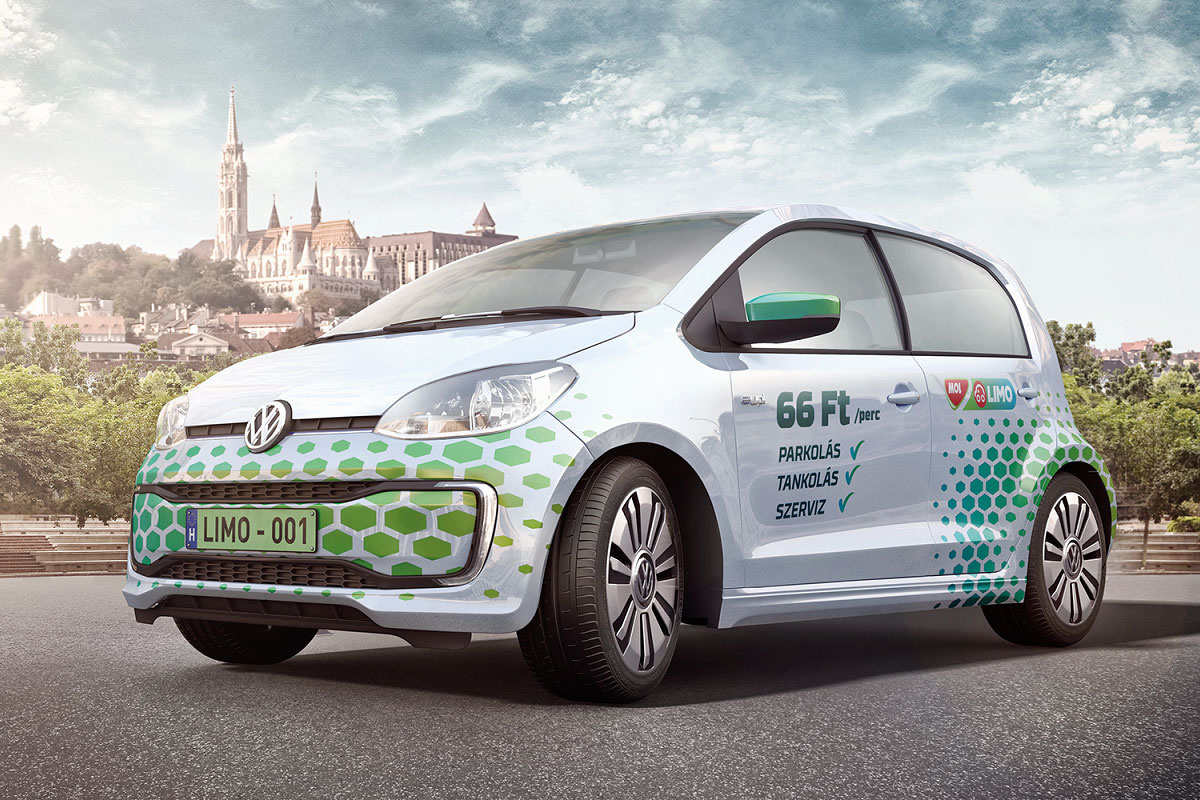
Draexlmaier to manufacture batteries in Timisoara
Germany’s Draexlmaier has also announced its intention to build a factory for ‘green’ vehicles batteries in Timisoara, where the company holds a land of 130,000sqm and has a development plan for a 15-year period.
The development is designed for two stages, the first in 2020-2021, which involves the construction of the first production hall with an area of 10,125sqm, and the second stage, during 2022-2030, and where the central building of 15,300sqm and the following production spaces will be built.
Germany’s Draexlmaier produces in Romania, in the factories from Codlea, Hunedoara, Pitesti, Satu Mare and Timisoara, electrical wiring, electrical and electronic components, high voltage wiring, interiors (cockpit, centre consoles and door panels). The main beneficiaries are BMW, Jaguar, Mercedes-Benz or Maserati.
Instead of conclusion
Perhaps it is not unimportant that the most valuable brand in the world that produces cars is Tesla, a company focused on the manufacture of ‘green’ vehicles. With a market value of USD 183bn, the brand founded by Elon Musk is followed by Toyota – USD 176bn, Volkswagen – USD 84bn, Honda – USD 45bn, Daimler – USD 44bn, Ferrari and BMW – each with USD 42bn.



